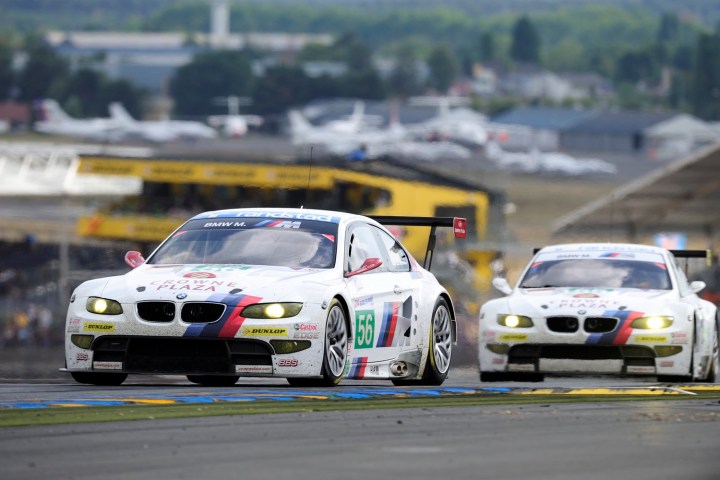
It will enter the FIA World Endurance Championship (WEC), the race series that includes Le Mans, in 2018, and will race in the GTE class for production-based cars. That means BMW won’t compete for an overall Le Mans win, but it will rub fenders with the same cars it competes with in showrooms.
The GTE class includes the Chevrolet Corvette, Porsche 911, Aston Martin V8 Vantage, Ferrari 488, and Ford GT (which won the class at Le Mans this year). Using race cars based on road cars makes the class more relevant to fans than the top LMP1 prototype class. It also allows BMW to pick up where it left off, as the company’s last Le Mans appearance was with an M3 GT, which finished third. BMW also won Le Mans overall in 1999 with its V12 LMR prototype.
Read more: Porsche 919 Hybrid Le Mans car cruises London streets
Exactly which car BMW will enter in the WEC is unclear. It currently uses a racing version of the M6 in certain U.S. and European series, but by the time 2018 rolls around it may decide to switch to a different model. BMW may also partner with a full-time race team, just as it does in the U.S.-based WeatherTech SportsCar Championship, rather than run the cars entirely by itself.
Separately, BMW also announced a tie-in with the Andretti Formula E team. The arrangement will last two seasons, and will include “cooperation on an engineering level and the mutual use of resources,” in the electric-car racing series, according to a Formula E press release. BMW may enter its own factory team in the 2018-19 season, depending on how things go. It already supplies pace cars and support vehicles to Formula E.
In addition to BMW, Audi, DS, Jaguar, Mahindra, Renault, and Venturi are all involved in Formula E on some level, as are startups Faraday Future and NextEV. Manufacturers are expected to get more involved in the coming seasons as organizers loosen restrictions on car design.


